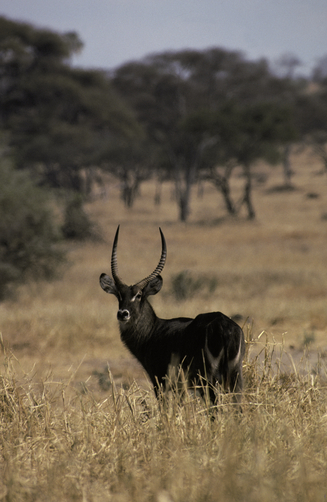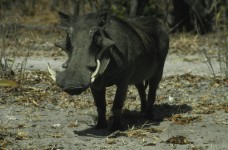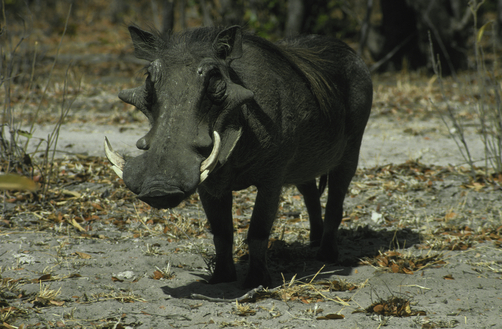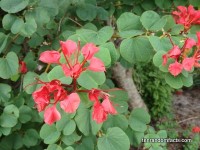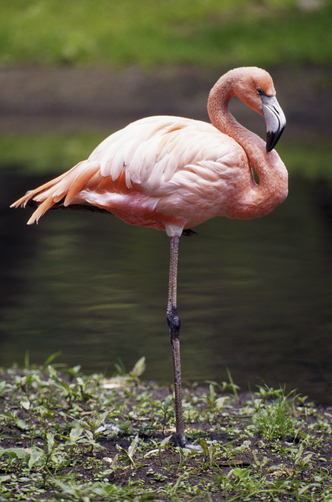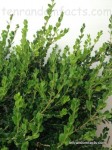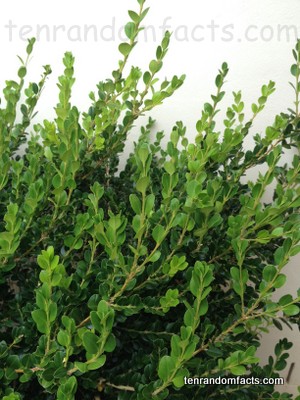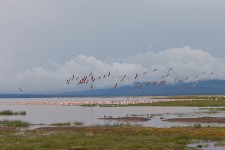
Waterbucks do not buck water.
- Waterbucks are native to Africa’s sub-Saharan area, and their are two main categories of the animal – ‘ellipsen’, that has a white ring on it’s rear end, and ‘defassa’, which has a white patch instead of the ring.
- Waterbucks grow to be approximately 1 to 1.3 metres (3.3 to 4.3 feet) in height to the top of their shoulder and weigh 160 to 300 kilograms (350 to 660 pounds).
- Waterbucks are scientifically known as ‘Kobus ellipsiprymnus’, and are from the family bovid, the family of mammals with unbranched horns, and are one of six species of African antelope.
- Contrary to popular African belief, the meat of a waterbuck is edible, although it may not be tasty.
- Only male waterbucks have horns, and they are long and slightly curved, and they grow longer with age.
Waterbuck
Image courtesy of National Geographic
- Waterbucks live in habitats of scrubs and grassy plains, that have much grass and close access to water to fulfill dietary needs.
- Waterbucks usually live in small herds, in all male groups, all female groups, or mixed groups, although the number of animals in a herd can be quite numerous.
- Waterbucks may enter bodies of water to hide from predators such as hyenas, lions and leopards, and even though they don’t enter the water much, they are good swimmers.
- Waterbucks generally live up to an age of 18 years, and the females usually give birth to a single calf each year, which is hidden away for a number of weeks.
- Waterbucks have an off-putting odour that comes from their sweat glands, that deters prey and affects the flavour of their meat.
Bibliography:
Huffman B, Waterbuck, 2004, Ultimate Ungulate, http://www.ultimateungulate.com/Artiodactyla/Kobus_ellipsiprymnus.html
Waterbuck, 2013, Wikipedia, http://en.wikipedia.org/wiki/Waterbuck




